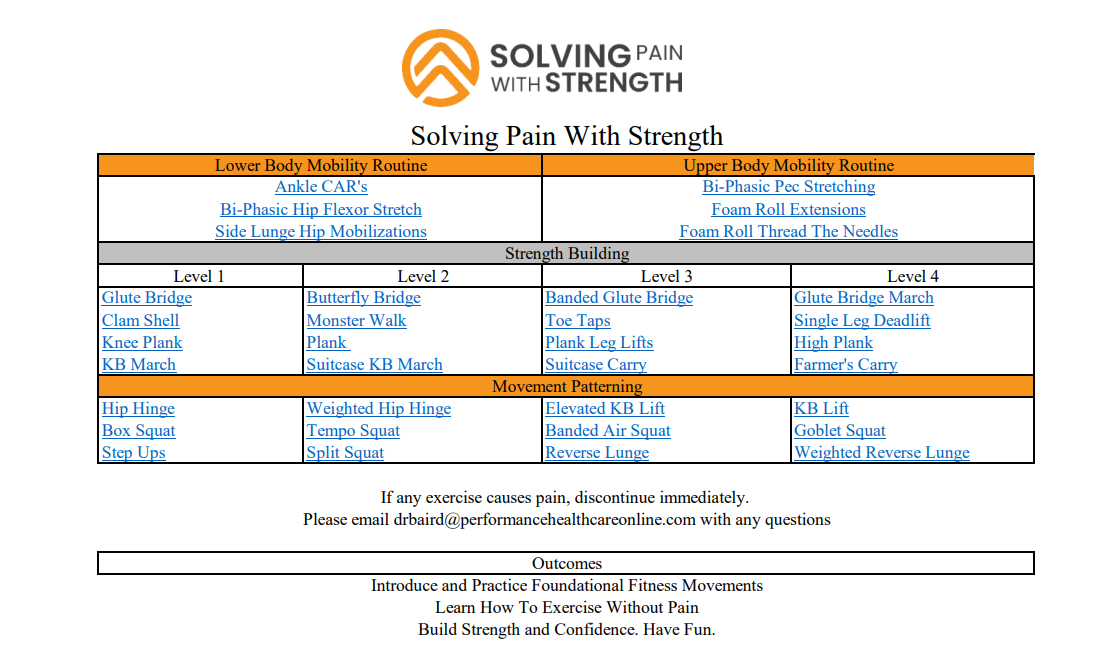Five Reasons Physical Therapy Failed To Solve Your Joint Pain And Arthritis
Physical therapy is a common treatment option for adults with joint pain. And while physical therapy can be extremely beneficial, it doesn’t always work for everyone. In fact, a lot of my clients find my clinic after physical therapy has failed to solve their joint pain. There are a number of reasons that physical therapy can fail to solve your joint pain and arthrtitis which we’ll get into below.
1. Failed To Treat The Root Cause
The #1 reason phsyical therapy fails to solve joint pain is that many plans fail to address the root cause of your pain. For most adults as they get older, the root cause of their joint pain and arthritis too much impact on your joints. Many physical therapy plans focus on relieving symptoms without addressing this root cause. An easy example is stretching for lower back pain. While low back stretches feel good and can ease pain, they do nothing limit impact that goes through your spine. This almost always ensures that your pain comes back as you get older.
The only way to keep active and maintain your lifestyle as you get older is to learn to limit impact on your joints. A better plan to solve joint pain has to involve improving movement and building strength.
Learn More About The #1 Cause Of Joint Pain In Adults
2. Given A Cookie Cutter Plan
One way a physical therapy clinic can fail to address the root cause of your issue is by prescribing a ‘cookie cutter’ plan. These are plans that are given to EVERYONE with the same condition. Back pain? Do these five exercises. Knee pain? These five. The same exercises for everyone that walks through the door. While they do work for some, they fail for many others. And when they fail it’s because they didn’t address the cause of YOUR back pain.
A plan to solve joint pain needs to be personalized. Is your joint pain caused because you’re too stiff? Too mobile? Too weak? A previous injury? A muscle imbalance? These all require different exercises which can’t be accomplished with a ‘one-size-fits-all’ plan.
An example of a cookie cutter physical therapy plan
3. No Progressions
Most physical therapy plans do not include any progressions. Meaning you are given a set of exercises and never shown how to make them more challenging. This causes many patients to feel stuck, a place we call ‘rehab purgatory’. They may have made some progress but don’t know how to move forward.
To solve joint pain you have to get stronger. To get stronger you have to challenge yourself. To challenge yourself your have to progress your exercises to meet your body’s new capabilities.
An example of one of my strength training programs with 4 different progressions.
4. Treating Isolated Body Parts
Another reason physical therapy often fails is when the provider becomes hyperfocused on treating the injured area. For example, you had knee pain and so they focused their entire plan on treating your knee. The problem is knee pain can be caused a lot of things elsewhere in the body. A lack of hip mobility, glute strength, ankle stiffness, or side to side leg strength imbalances to name a few. Failing to address the entire body will cause physical therapy to fail.
Toes taps are a great full body exercise that builds single leg strength, improves balance, and targets your glute med for less knee pain.
5. Expectations Not Aligned
It’s important that when beginning a plan to solve joint pain that you have the right expectations. The first expectation revolves around the time it will take to reach a sucessful outcome. Solving joint pain takes time. If you’ve had joint pain for the last 10 years, it’s unrealistic to expect a full recovery in two weeks. In order to be successful, you have to stick with it. Consistency is the key to success.
The second expectation revolves around what is a ‘successful outcome’. Pain is a part of life. It’s unrealistic to expect that you’ll ever be 100% pain free. Especially is you are dealing with arthritis or other complications factors. With that being said, it’s not unrealistic to expect that you can keep active and maintain your lifestyle as you get older. Successul outcomes for physical therapy should revolve around your ability to keep active rather than pain alone.
Remember, physical therapy and strength training are not the same thing. Physical therapy often fails to treat your joint pain and arthritis because it doesn’t fix the root cause of the pain. A better approach is to utilize strength training. Improving movement and building strength is the best way to keep active and maintain your lifestyle as you get older.
For the last 12 years I’ve been helping adults 40+ build the strength and confidence to live active, healthy, and happy lives. To help you get started, I’ve put together a free step-by-step strength program to help adults build a solid movement and strength foundation. Check it out down below!





